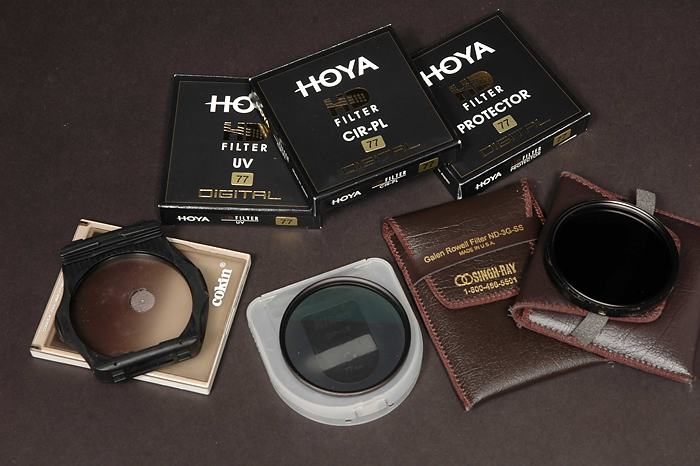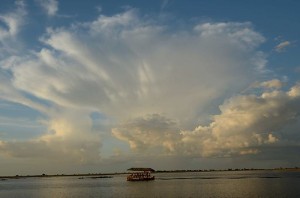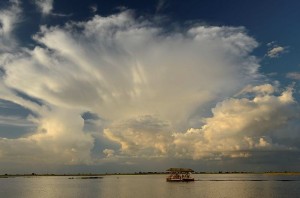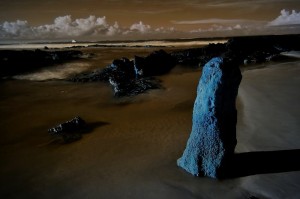When I got started in photography, one of my first accessories was a cross-star filter. It created a cool effect on my night shots, and believe me, I needed all the help I could get. These days I still use filters, and mostly for special effects. Now I hope that they can help make an already nice scene more interesting.
The one filter you’re most likely to find me carrying on a daily basis is a polarizing filter. A circular polarizer, to be exact (linear can create problems with metering and autofocus). Polarizers can reduce or even remove reflections, which means they do something often impossible to do with software. You see this most often in shots including blue sky. If the sun’s to your right or left (90-degrees to your scene), then that blue sky will get
darker if you turn the polarizer just right.
Recently, though, I’ve added a few new filters to my collection. Some of them are simply for protection. Often called “Protector,” or “No Color,” their job is to protect the front element of your lens. They’re great in dusty or wet environments, as I was recently in Africa and the Galapagos Islands of Ecuador. And they’re good if a lion decides to paw your lens (see previous post XXXX).
I also got a new ND (Neutral Density) filter. An ND filter blocks light, so you can use a slower shutter speed. These are great for making blurry photos of moving subjects/objects, like running water. For these examples I used an 8-stop, which let me go from 1/160 second to 2 seconds, nearly making the traffic disappear.
And I added an infrared filter. These are nearly opaque, requiring a tripod and LONG exposures. You can use them to create unusual color or very contrasty black and white photos. Depending on the white balance you set, the result is usually red. That means you’ll want to shoot in RAW format and adjust the image afterwards. The biggest drawback to these are those long exposure times, meaning you need a tripod and can’t work fast. If you want to avoid that, then you need to have a camera converted to infrared. I had that done recently to an old Nikon D80, and will write about it in the near future.
For me, filters are an essential part of any photo kit. But there are a few things to remember. For one, a cheap (inexpensive) filter’s probably worse than no filter. If you’re adding glass to the image path, it better be well-made and have good coatings. Otherwise it’s
just going to degrade the quality of the capture. I usually tell people, “spend more than you want to,” when buying a filter. I’ve got Nikon and Singh Ray filters, and have recently added some very nice Hoya HD’s to the kit (Polarizer, Protector and ND). And to save some money, buy the largest filter size you need, then purchase the much less expensive “step-down” rings to use them on smaller-diameter lenses.
I no longer have that cross-star filter. But I’m still a fan of filters. For a photographer in the right conditions, they can make all the difference.





